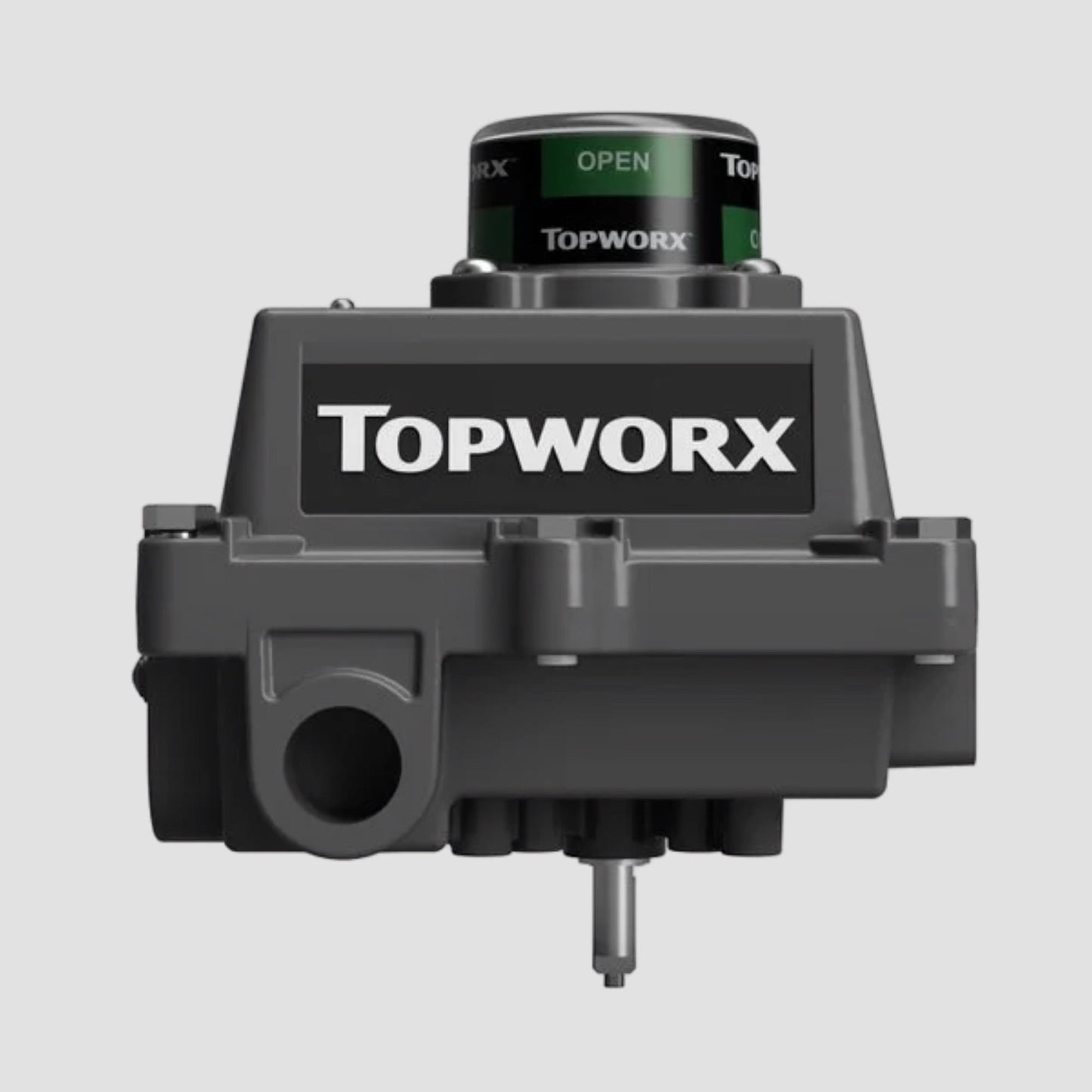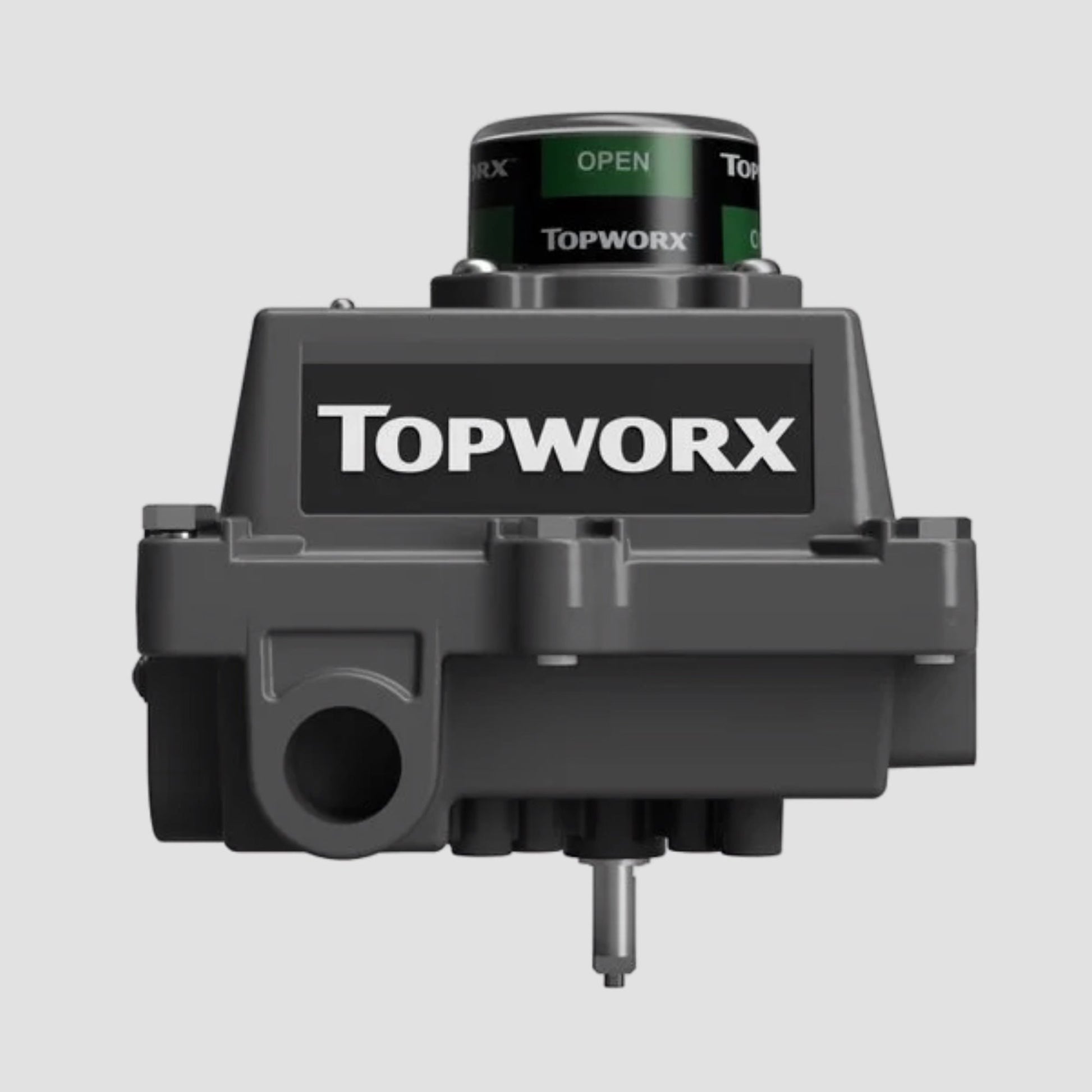Topworx Switchboxes
TopWorx Limit Switch Box DXP-001GSMB Valve Monitor
TopWorx Limit Switch Box DXP-001GSMB Valve Monitor
Couldn't load pickup availability
The TopWorx Limit Switch Box DXP-001GSMB Valve Monitor provides reliable valve position feedback with a robust, tropicalized aluminum enclosure designed to withstand harsh environments. Featuring an explosion-proof and flameproof design, it’s suitable for critical applications in hazardous areas. The 316 stainless steel ¼" DD shaft and Buna-N O-rings offer durability and corrosion resistance, ensuring long-lasting performance even in challenging conditions. Equipped with a clear 90° Green OPEN visual display, the DXP-001GSMB allows operators to quickly verify valve status at a glance.
Key Features:
- Enclosure: DXP tropicalized aluminum, built for durability in demanding environments
- Area Classification: Explosion-proof/flameproof, ideal for hazardous locations
- Shaft Material: ¼" DD 316 stainless steel, providing robust corrosion resistance
- Visual Display: 90° Green OPEN display for clear valve status visibility
- Conduit Entries: (2) M20 conduit entries for versatile installation
- Seals: Buna-N O-rings ensure reliable sealing and leak prevention
This TopWorx DXP-001GSMB model is engineered to offer reliability, safety, and convenience, meeting industry standards for rugged valve monitoring without compromising on essential features.
Share

FAQ's
What is the difference between a valve and an actuator?
What types of actuators are available?
The main types of actuators are:
Pneumatic actuators – use compressed air for fast, reliable operation.
Electric actuators – use electrical power for precise control.
Hydraulic actuators – use fluid pressure for high-torque applications.
Each type offers unique advantages depending on the environment, media, and system control needs.
How do I choose the right actuator for my valve?
To select the correct actuator, consider:
Valve type and torque requirement
Power source available (air, electric, or hydraulic)
Operating environment (temperature, humidity, hazardous area)
Control signal type (on/off or modulating)
Matching actuator torque and compatibility with the valve’s ISO mounting ensures reliable performance.
What are the main types of valves used in automation?
The most common valves in automated systems include:
Ball valves – for tight shutoff and quick operation.
Butterfly valves – for larger flow control with compact design.
Globe valves – for precise throttling and flow regulation.
Check valves – to prevent backflow.
Gate valves – for full bore flow isolation.
What’s the difference between a double-acting and spring-return actuator?
Double-acting actuators use air (or power) to both open and close the valve.
Spring-return actuators use air to open (or close) the valve, and a built-in spring to automatically return it to a safe position when power or air is lost — ideal for fail-safe operation.
How often should valves and actuators be serviced?
Regular maintenance intervals depend on operating conditions, but a good rule of thumb is to inspect every 6–12 months.
This includes checking for leaks, lubrication, seal wear, and actuator responsiveness to prevent unexpected downtime.

